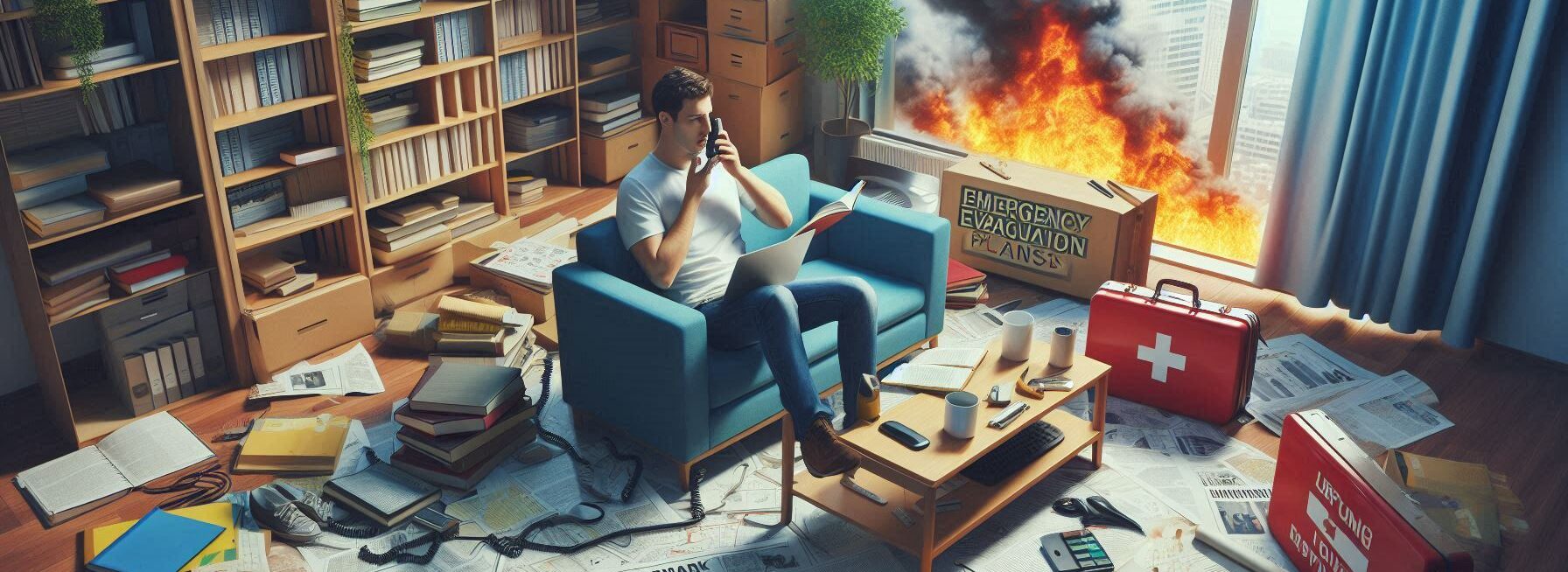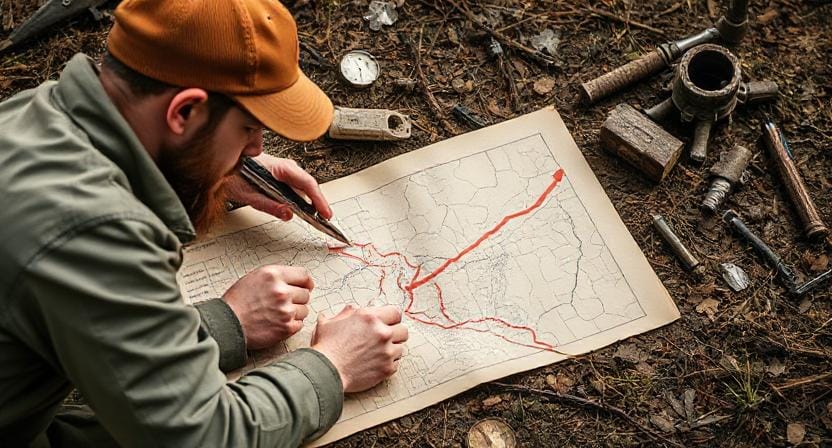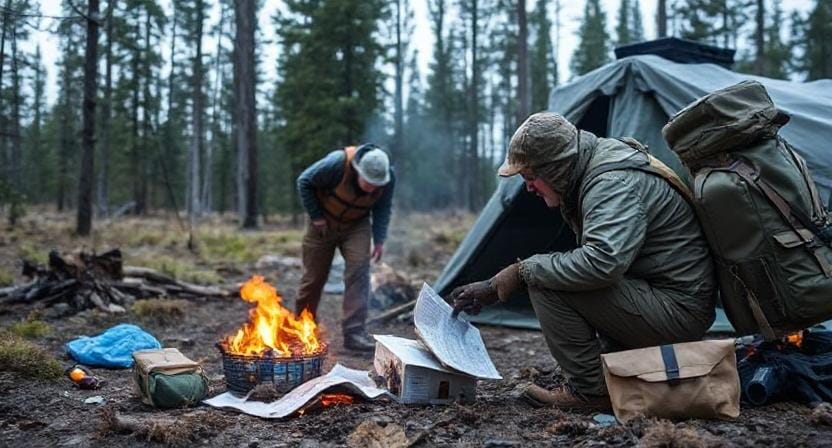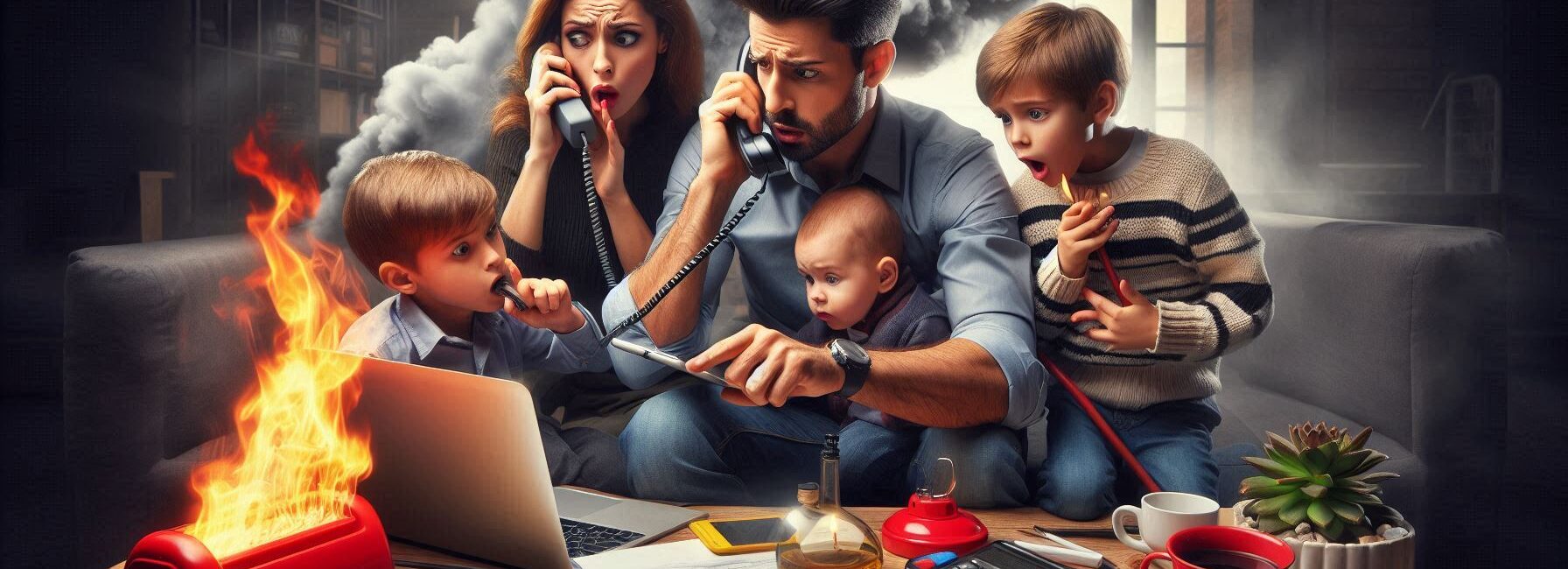Please Note: This post may contain affiliate links. If you click one of them, we may receive a commission at no extra cost to you. As an Amazon Associate, I earn from qualifying purchases.
Last Updated on November 2, 2025 by Kevin Collier

Top Takeaways and Key Concepts
– Create a detailed emergency evacuation plan for your household.
– Identify multiple evacuation routes and practice them regularly.
– Assemble an emergency kit with essentials for quick departure.
– Designate a meeting point for family members after evacuation.
– Regularly review and update your plan based on changing circumstances.
It's really vital to plan for emergencies. It's like choosing the best running shoes—who wants to run in flip-flops? Not me! You really need to have a good plan in place.
Just give it some thought. Picture a storm coming in, or anything else happening that you didn't expect. It might be very stressful if you don't know where to go or what to get. People start to panic, and that's not fun for anyone.
Let's take a deep breath and make this simple. You can relax knowing you have a plan for getting out. You can feel peaceful and ready before anything happens. What a relief!
Begin with a modest step. Take a piece of paper and write all the exits in your home. Write down a list of places that are safe to travel. It could be a place in the neighborhood, like a community center. Put some love into it!
Tell your friends or relatives about your strategy. Make the conversation enjoyable. You could even do a practice run. Act like you're running away from zombies or something else crazy. It will make everyone feel better and get them all on the same page.
Put snacks, water, and other vital things in a go-bag. It's like getting ready for a great trip, except this one is for safety. Put in stuff like a flashlight, a first-aid kit, and anything else you can't live without.
You feel good about having a plan. When things go tough, it's like having a secret weapon. So, let's get ready to deal with whatever comes our way, even if it's a sudden storm or a cat on a mission!
Contents of This Page
*** Shop for Survival Gear - Tools - Kits ***
Survival Gear - Bags and Backpacks - Knives - Boots/Footwear - Communication
Outdoor Cooking - Gloves - Hydration - Dry Boxes - Water Filtration Systems
Tents - Sleeping Bags - First Aid Kits - Multi-Tools - Flashlights - Fire Starters
Navigation - Survival Food - Night Vision - Headlamps - Stun Guns - Binoculars
Understanding Why You Need an Evacuation Plan

First of all, why should you even have an evacuation plan? I mean, who needs one when you can just go with the flow during a disaster? Not right!
You should think of your evacuation plan as insurance. You hope you never have to use it, but when the storm comes out of nowhere or the neighbor's BBQ blows up again, you'll be pleased you did.
Hurricanes, wildfires, floods, and other natural disasters can happen in numerous ways. Each one needs a separate plan and timing.
If you wait until the last minute to leave for a storm, for instance, traffic congestion could be so horrendous that rush hour looks like a walk in the park. No one wants to be caught in traffic, wondering if they should have left earlier or brought extra snacks.
So here's the deal: knowing what your dangers are can help you make an evacuation plan and get everyone on board with what's at stake. It's not just about keeping yourself safe; it's also about keeping your family safe and maybe even that collection of inflatable flamingos you've been taking care of!
Making Your Escape Route

Now that we know why we need a plan, let's speak about the routes. This isn't just any road; it's your escape route—the road less traveled when things go wrong!
First, plan out a few ways to go from your house to safety. Let's be honest: Google Maps might not work in emergencies (thanks a lot, mobile towers).
Look at area maps and think about things like transportation routes and possible problems, such jams created by fallen trees or excessively dramatic neighbors trying to save their garden gnomes from rising floods.
It's also a good idea to look for other ways to get there ahead of time, because relying only on memory when things go wrong is like using spaghetti as rope.
And don't forget about your dogs! If Fluffy has ever hidden from you at bath time, think about what she would do if she thought she was in danger. Make sure your pathways are secure for pets as well. They need safe travel just as much as we do.
Telling Others About Your Plan

Hmm… communication is very important for any evacuation strategy to work. What good is a plan if no one knows about it? Bring everyone together, even Uncle Bob, who thinks he knows everything, and talk about the details of your plan.
Make sure everyone knows what they need to do, because things may go from bad to funny in the time it takes to say, “Where's my shoe?”
Think about making maps or charts that illustrate where to meet and how to get out of the building. You could even make T-shirts that say things like “I survived Hurricane Bob!” (just kidding…maybe). You may prepare ready for serious situations and build teamwork by doing these fun things together.
You shouldn't forget about technology either! Make group messages or family chats so that everyone may stay in touch before and after leaving. This way, if someone gets lost or sidetracked by a squirrel that catches their eye, they may simply make their way back to the group.
Putting Your Plan into Action

You've probably heard the saying “practice makes perfect” before. That also goes for plans to get people out of the building.
Do exercises often so that everyone is ready to follow the plan when things become tough. After all, nothing says “prepared” like running out of the home with mismatched shoes!
Pick several types of emergencies to use as practice scenarios. What would happen if there was an earthquake instead of flooding? What would everyone do?
In these fake drills, people can learn what works best without having to deal with real-life problems (unless they want to race to see who can run the fastest).
To be honest, rehearsing also helps families find flaws in their plans, like how many times someone slips over their own feet while trying to get emergency supplies!
Making Your Emergency Kit

Oh yes, the pack for emergencies! This miraculous backpack should include everything you need to survive an unexpected trip away from home (or maybe even to hide from Aunt Edna). Start with non-perishable foods because no one wants granola bars that are older than last year's Halloween sweets.
For at least three days' worth of hydration, make sure to include a lot of water—about one gallon per person each day. Trust me, while you're leaving disaster zones, thirst is more important than snacks!
Also, bring flashlights (with extra batteries) and first-aid kits. Injuries can happen not only during disasters but also when you try to put together IKEA furniture afterward.
And don't forget to bring things for personal hygiene. A toothbrush can help keep spirits up in the face of disaster (and terrible breath!). Also, add comfort goods like blankets or cuddly animals. They help keep your spirits up when things get tough outside!
Being Open To Change In Emergencies
Last but not least, be flexible! Life loves to throw us curveballs, whether we're ready or not. That's why being able to adapt is so important during emergencies when plans may need to be changed in the middle of an evacuation because of things that are beyond of anyone's control.
For example, what would happen if water made highways impassable? Or maybe there's a lot of traffic that is making it harder to get to safety? Being ability to change rapidly keeps families engaged instead of fretting over missing turns!
To be fair, though, it also helps keep things light during these difficult times. Making jokes about natural catastrophes, like “What did one tornado say to another?” “You blow me away!” helps keep spirits up while you navigate unknown territory.
Frequently Asked Questions
Why should every household have an emergency evacuation plan?
An evacuation plan prepares your family to respond quickly and confidently during emergencies, reducing panic and confusion when time is limited.
How many evacuation routes should be identified?
It is recommended to plan multiple evacuation routes to avoid blocked roads, debris, or hazards that may render one path unusable.
What should be included in an emergency evacuation kit?
Include food, water, first aid items, flashlights, batteries, hygiene supplies, and other essential items needed for several days.
Why is designating a family meeting point important?
A meeting point provides a predetermined location where everyone can regroup if communication fails or family members become separated.
How often should evacuation plans be practiced?
Regular drills help reinforce memory and allow the family to react quickly, while also revealing weaknesses that may need improvement.
How frequently should the evacuation plan be updated?
Review the plan regularly to account for changes such as new home layouts, different family routines, or changing environmental risks.
Do pets require special planning for evacuation?
Yes, animals need secure transportation and supplies, and their needs should be considered when choosing routes and shelter options.
Suggested Resources:
Emergency Preparedness Checklist
https://www.ready.gov/kit
How To Create a Family Emergency Plan
https://www.redcross.org/get-help/how-to-prepare-for-emergencies/make-a-plan.html
Evacuation Planning Resources
https://www.fema.gov/emergency-management/evacuations

Kevin Collier is a seasoned survivalist and expert in prepping and homesteading, contributing to WiseSurvive.com. With a deep-rooted passion for self-sufficiency and outdoor survival skills, Kevin shares practical advice, strategies, and resources to help individuals prepare for any challenge. His informative articles cover a range of topics, from essential survival techniques to sustainable living practices, empowering readers to thrive in any situation. Whether you're a novice or a seasoned prepper, Kevin's insights will inspire you to take charge of your readiness and build resilience for the future.




